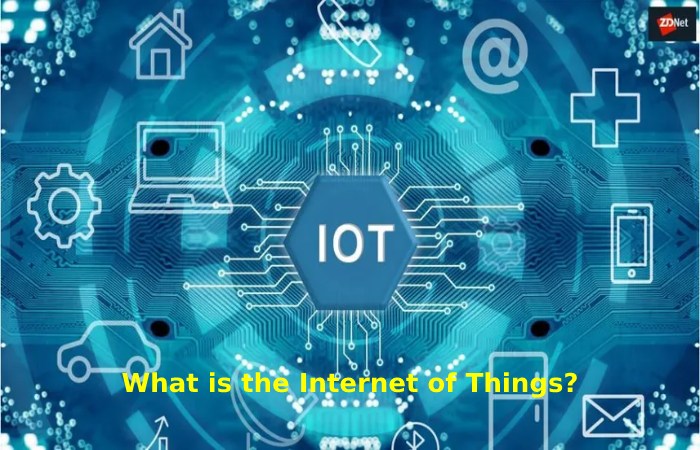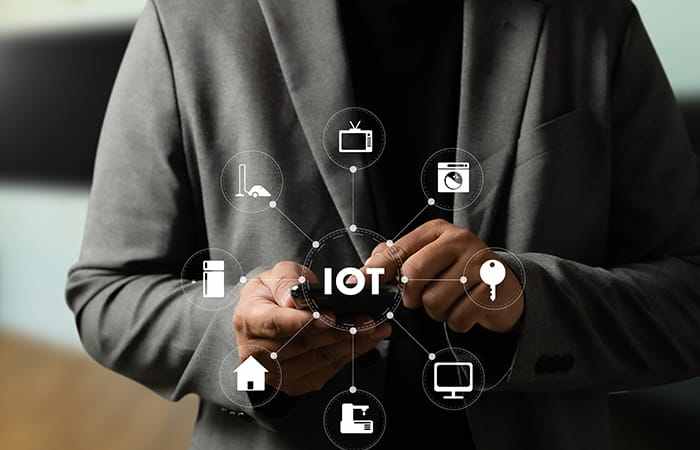Table of Contents
Introduction
The approval of technologies like the Internet of Things (IoT) and mobile app are becoming more prominent as billions of people use smartphones that get connected. IoT and mobile app progress are two such prospects that industry analysts predict can change our lives in a significant way. Imagine how IoT interfaces with mobile apps to improve user experience and convert a smartphone into an intelligent home manager of gadgets. These technologies will likely dominate the future and bring a new change in enterprises across all industries.
As the market for IoT devices and apps continues to grow, mobile app developers must stay ahead by incorporating IoT technology into their apps. From collecting and analyzing data to improving the user experience, IoT transforms how mobile apps are developed and used.
IoT will take mobile app development to the next level. Many businesses across the globe are eagerly anticipating to see what the future holds in IoT and what they can control with a smartphone. Before digging deeper into the Internet of Things and mobile app integration, look at what IoT and IoT applications are and where they are predominantly used.
What is the Internet of Things?

IoT mentions to a system of interconnected computing devices and machines that can exchange data and information over the network without human intervention.
In other words, IoT is the concept of connecting any device (that has an on/off switch) to the Internet and other connected devices. It is a giant network of connected devices or machines and humans. All together, collect and share information and data.
IoT includes an unbelievable number of devices of all sizes and shapes. From an intelligent microwave, which automatically cooks your food, to autonomous cars. Where the complex sensor detects other vehicles and objects, to wearable devices that measure heart rate and also the number of steps you’ve taken in a day.
Why it Matters?
Any device that is linked to the Internet means it can send or receive data and information or do both. The ability to send and or receive data makes things bright. Let’s use smartphones as an example. You can lookout videos or listen to songs worldwide, but not because the smartphone has stored every music or video. It is because these files are stored somewhere else (the cloud), and the smartphone can request a particular video or a song and receive the content to stream.
All the things that come under the IoT can be put into three categories:
- Sensors – that collect information and transfer it to the computer.
- Computers receive the data and information and then respond to it.
- Things that do both.
The evolution of IoT is pushing the boundaries in the mobile application development industry to embrace new changes and innovation. For example, an IoT-integrated mobile application can start your car remotely, monitor security cameras, control your home appliances, and much more.
Not-Enabled Mobile Apps will Necessarily Entail AI
Businesses need to manage and analyze large amounts of data from IoT devices. The IoT is no more about just monitoring conduct. It’s about rapidly processing data and making that information for accurate predictions. It is due to the capability of IoT to connect with Artificial Intelligence (AI) and Machine Learning (ML).
In the upcoming years, many businesses will depend on IoT and AI-powered mobile apps as everything will have connectivity. A few examples of existing IoT services integrated with AI, like Google AI, Apple Siri, and Amazon Alexa, represent future possibilities for AI-driven IoT mobile apps. The combination of AI and IoT has the potential to improve mobile app performance and provide a personalized user experience.
Greater Data Security in Tandem with Automl
There are more significant worries about data security and privacy in the IoT environment where multiple devices connect across different operating systems. And since data escapes are already on the rise, there is a massive increase in research and development on IoT-based mobile applications for better security using AutoML models.
Human intervention will automate machine learning, helping businesses adapt to new security measures. Companies can create several interactive features in mobile apps using AutoML toolsets on Android and iOS platforms. Machine learning holds the potential to perform highly efficient, scalable, and flexible tasks on big data to enhance data security.
Growth in the Utilization of Mobile Apps in Industrial IoT
Mobile apps have been the nearby ally of a connected ecosystem in the industrial space. And now, mobile apps play a crucial role in powering the Industrial Internet of Things (IIoT). IoT mobile apps have already made their presence in industry 4.0. However, there will be a maximum demand for IoT mobile applications shortly from the manufacturing, logistics, and warehouse sectors, changing how manufacturers operate their machines and factories.
Rise in the Usage of Wearable IoT Apps
Wearable fitness devices and smartwatches seamlessly interact with smartphones through an app. Wearable devices are an integral part of the IoT, and wearable apps such as fitness trackers. Smart eyewear, and more fall under the universal umbrella of IoT. Tech giants like Google and Apple use IoT solutions for their wearable products like Smart Lenses and the Apple watch.
There will be a vast rise in utilizing customized wearable IoT-integrated apps in the upcoming years. The IoT app development companies will work on providing more control to the users and also more secure connected systems.
Conclusion
The future is here Mobile apps play a critical role in implementing IoT. The relationship between IoT and mobile applications is improving with the proliferation and growth of connected devices. In the upcoming years, this relationship between IoT and also mobile apps will likely flourish and enter the mature stage. The IoT will continue to bring a massive change in the mobile app development ecosystem.

![The Future of IoT and Mobile App Integration [2023]](https://www.webcomputertech.com/wp-content/uploads/2022/09/IoT-and-Mobile-App-1200x675.jpg)